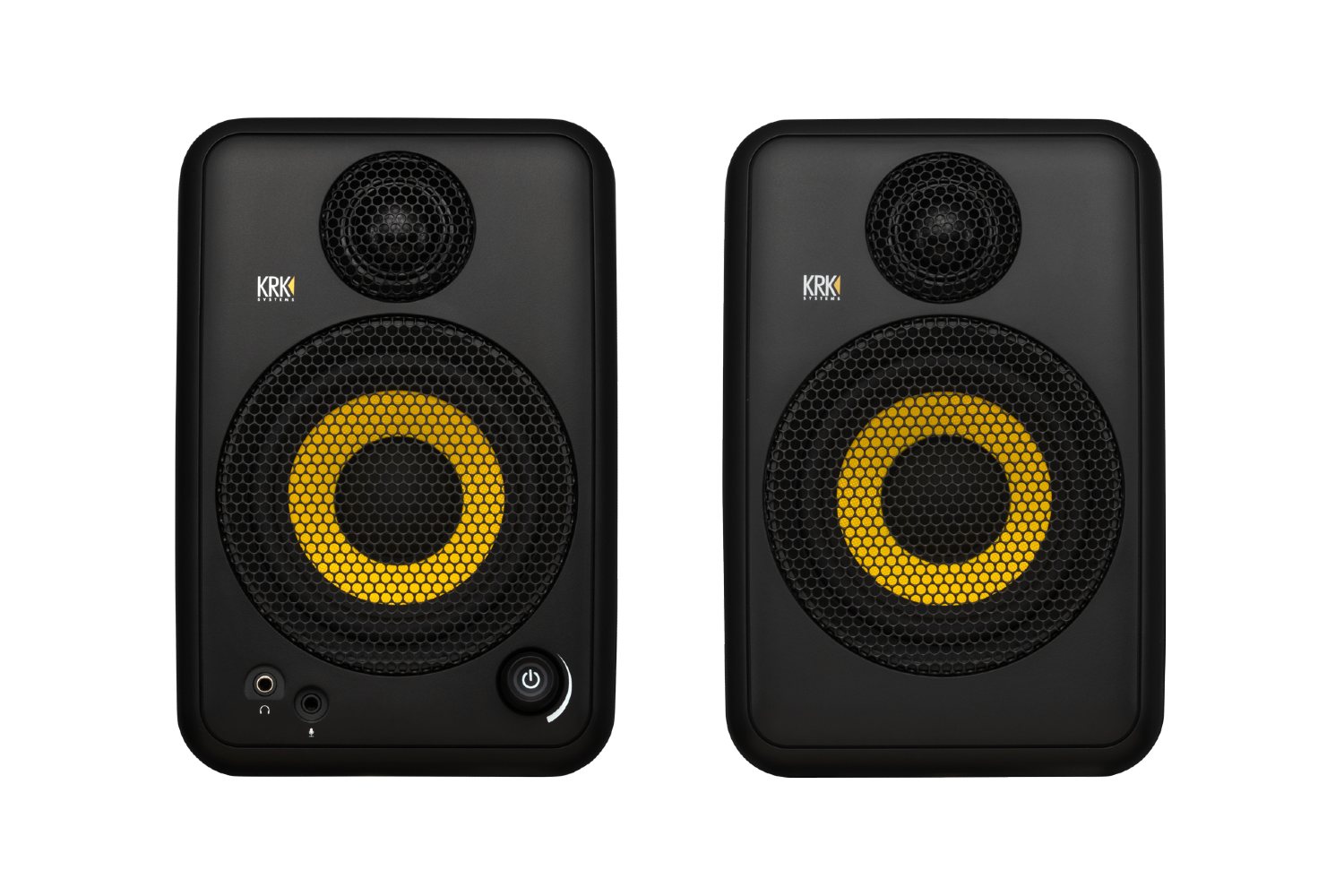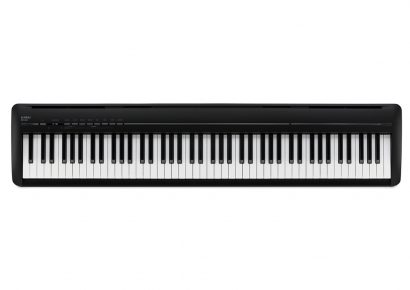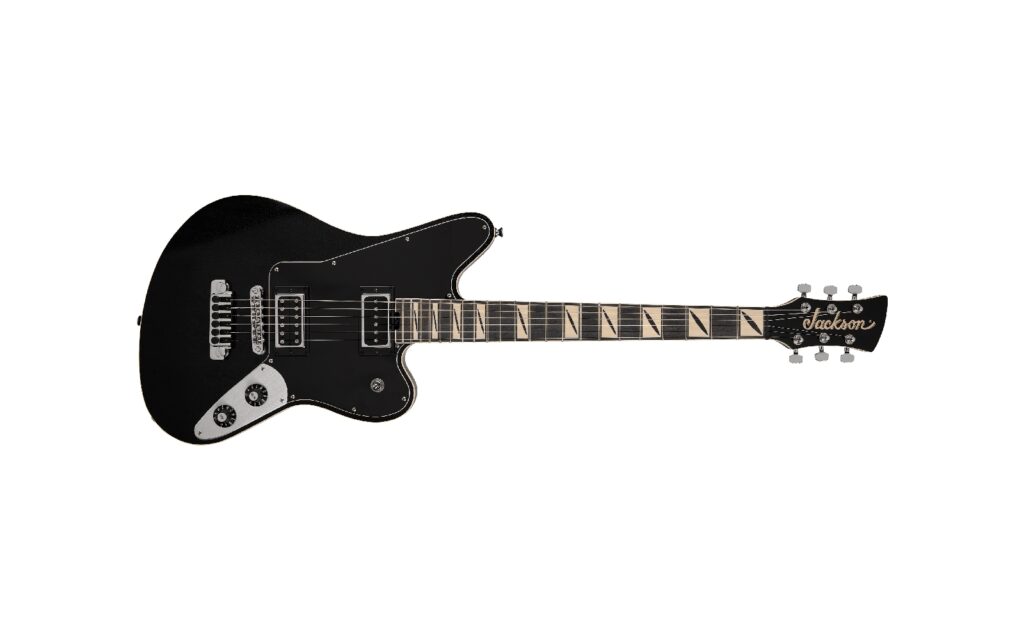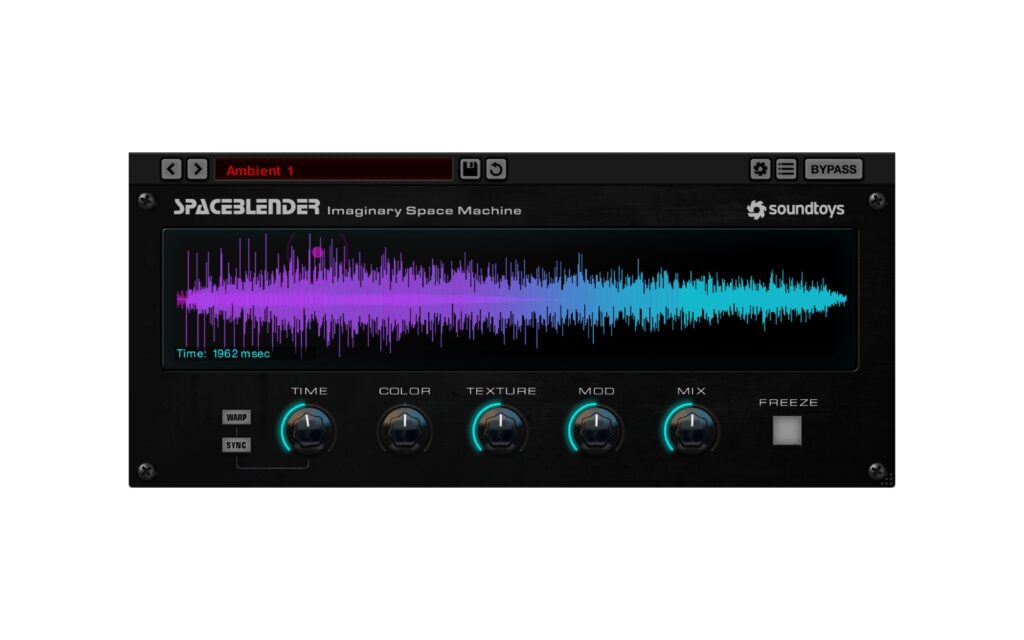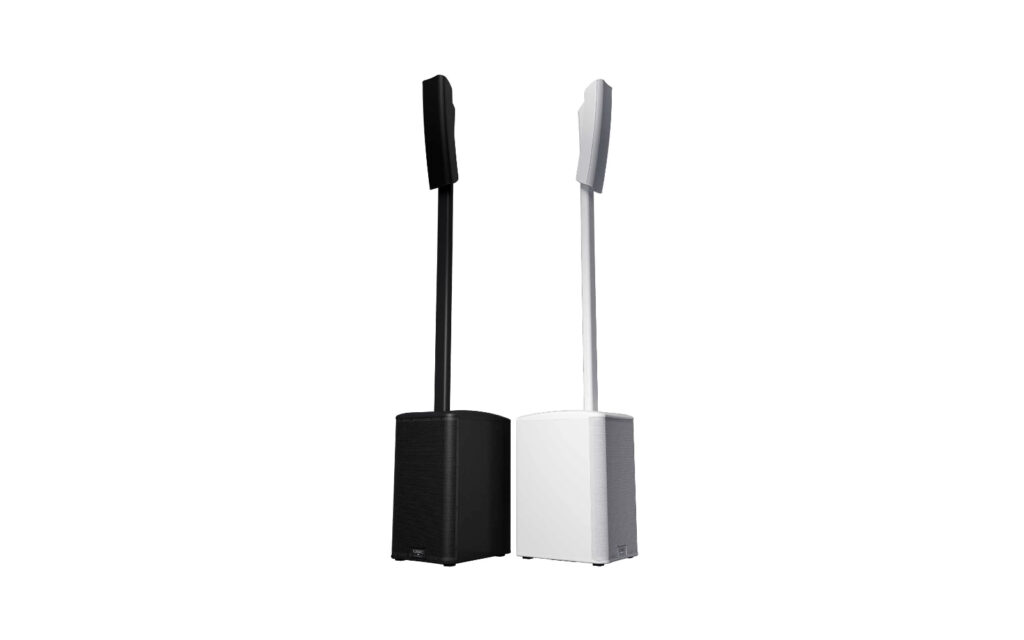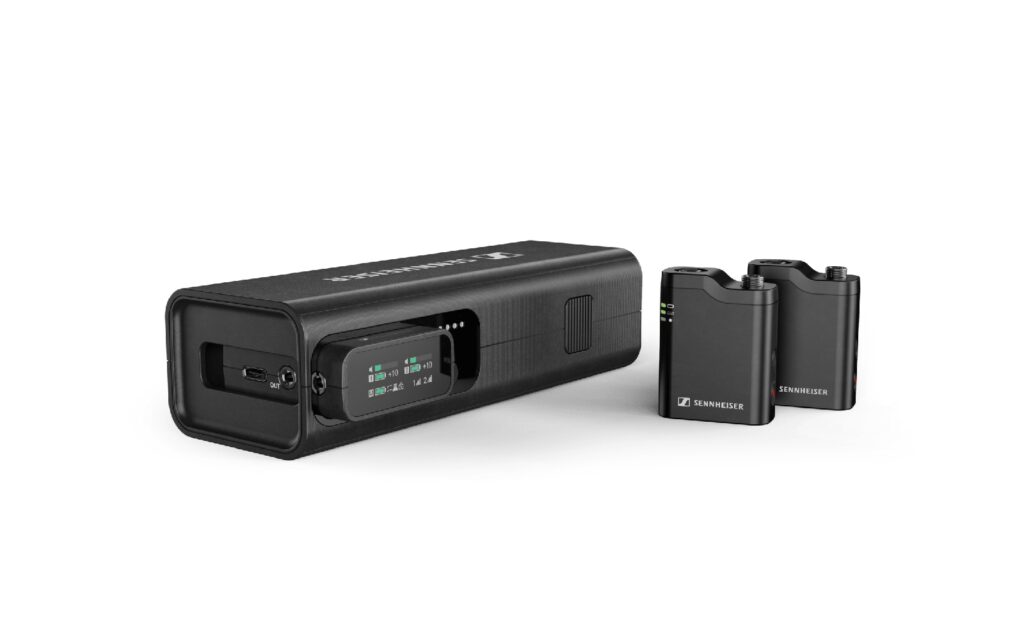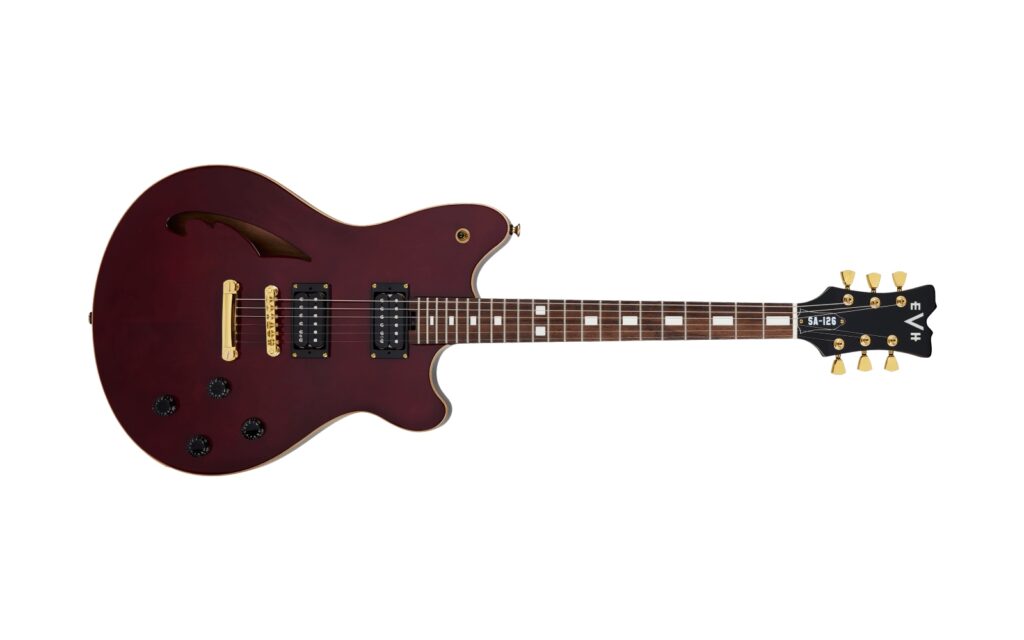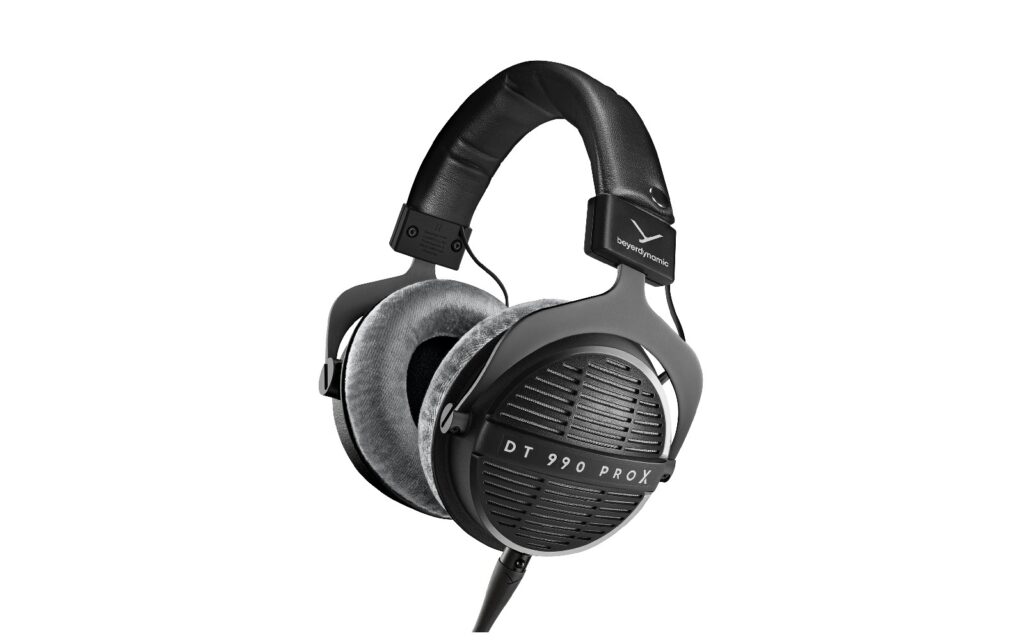Jands | Enquire for pricing
Most of you should know KRK monitors speakers by now. In fact, I would hazard a guess that most readers will have heard a pair of the yellow-coned speakers at some point. They have been around for long enough, and proven popular enough to be found in a wide range of professional and home studios alike, as well as being integrated into general listening and home theatre setups too. The Rokit series alone would be responsible for thousands upon thousands of speaker sales within Australia. And with such a wide range of options in their lineup, KRK has now gone one step further and developed a studio monitoring system that you can take anywhere. With the KRK GoAux 4, the mobile studio just became more efficient, and better tuned to its space, wherever that may be.
Check out more gear reviews here.
The heart of this system is a pair of four-inch KRK powered monitors, but they have been designed to be portable. So, with that in mind, KRK has built a single power amp into just one of the housings. The other runs a passive speaker powered by the first with an included speaker cable. This not only reduces the weight of the second speaker, and the overall weight of the system, but it also requires just one power cable, making it easier when power points are limited. While we’re talking about connectivity, the rear panel of the main speaker has inputs offered by ¼” balanced TRS connectors, RCA, 1/8” stereo jack, and Bluetooth. There’s also a headphone output on the front panel that mutes the speakers for silent monitoring when needed.
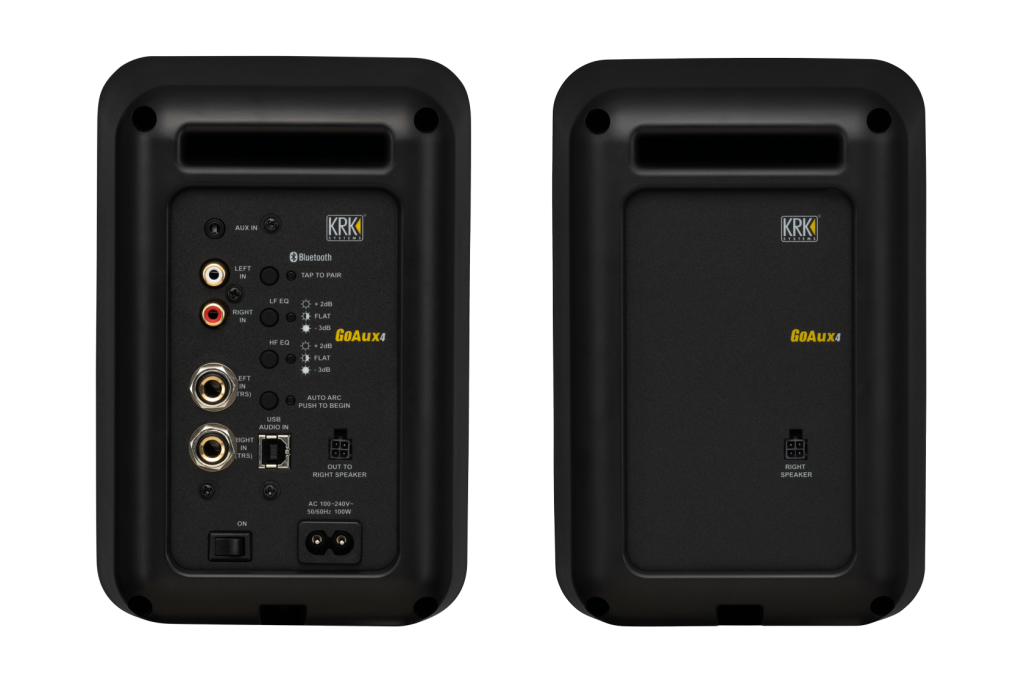
Designed to be used as a compact nearfield monitor, KRK understood that the perfect position for these speakers was going to be different in every environment. So, they have included a pair of compact speaker stands that allow you to angle the position of the speakers for best results. Let’s face it, when you’re taking your recording, mixing, or editing on the road with you, you never really know what space you’ll have to set up in. Often, a low desk space with no shelves for the speakers leaves them too close and firing into your stomach region. This is far from ideal listening conditions and will only serve to diffuse the transient response, reduce the high frequencies, and deliver an unbalanced signal. So, the stands allow you to adjust the angle of the speakers to get a more directional sound that is targeted to your listening position. When not in use, they fold up neatly and slide away into the included KRK GoAux 4 carry bag.
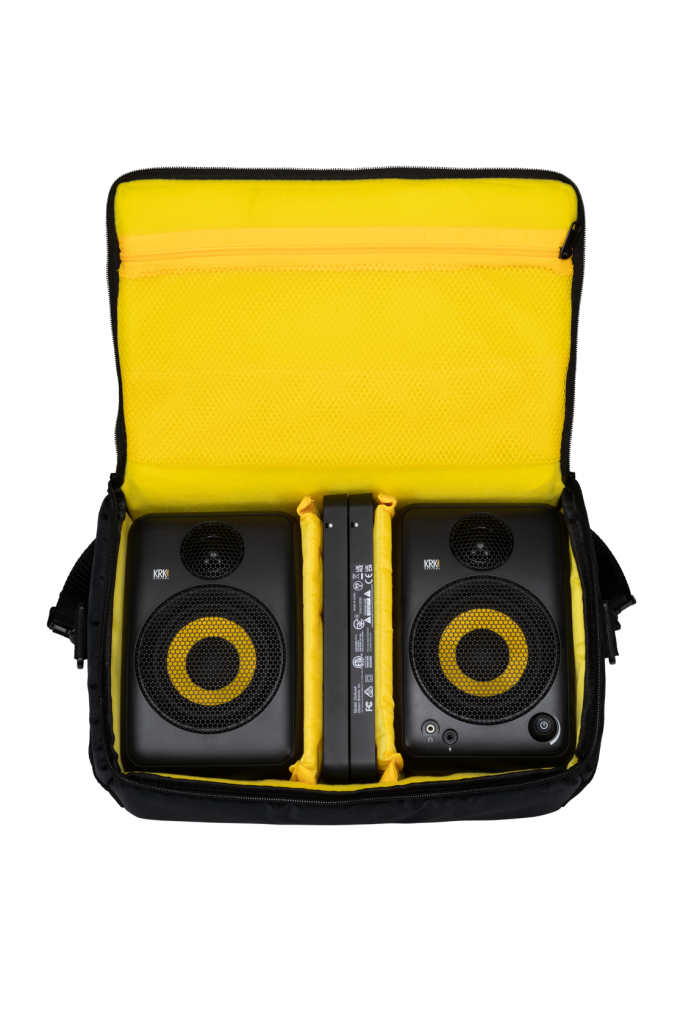
Yes, this speaker system comes with its own padded carry bag, so you will be all set to take them wherever you need to go. It has space for both speakers, the stands, all cables, and the included ARC microphone. For those of you who haven’t heard of KRK’s ARC microphone, let me fill you in.
The ARC microphone is designed for Auto Room Correction and was originally developed for use with KRK’s Ergo system to be used with larger studio monitor and subwoofer setups in professional studios. KRK has now integrated that hardware and DSP into the GoAux 4 so you get a compact room correction device within the speaker itself. Once both speakers are set up in the ideal location to suit the space, the microphone is set up in the listening position and connected to the main speaker. Pressing the ARC button on the rear of this speaker initiates the process. It runs though an extended series of different tones at varying sound pressure levels, which somewhat sound like you may have just broken your system. At the end of this process, a short low frequency signal is sounded to notify you that the auto room correction is complete. The microphone can then be stored away until any changes are made to the listening environment that would require a new ARC process to be run. The result can be likened to spending an extra thousand bucks on your speakers. They suddenly jump from sounding great, to magnificent.
The process doesn’t just analyse the high and low frequencies in the room to balance the EQ of the speakers, there’s a lot more to it than that. It takes into account the reflections caused by hard surfaces and low frequency boom created by unavoidable bass traps. This results in a more balanced audio signal that vastly improves the stereo imaging, especially when working in a room that isn’t perfectly symmetrical in design and décor, as just about every room is. A window on one side of a room can dramatically effect how two speakers working in stereo sound as reflections from only one side are coloured differently. The RC process works to alleviate these differences and bring a more natural, balanced audio image to your listening position.
The result of all this is a great-sounding, compact audio monitoring system that can be set up in just about any space. Best of all, within a few minutes, it can be tuned to work with that space. This will get you closer to having consistent listening environments in different spaces if you have to work on the go. The result will be not only a more enjoyable listening space, but more balanced stereo imaging and low frequency control in your work. Then, when you’re done, it all packs neatly into the included carry bag so you can take your monitoring to a new location, knowing well that you’ll have a comparable sound when you set up there too.
Head to KRK for more information. For local enquiries, reach out to Jands.
